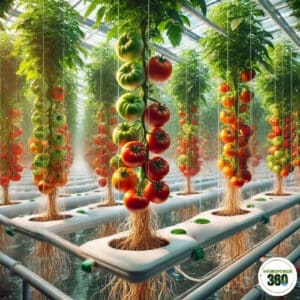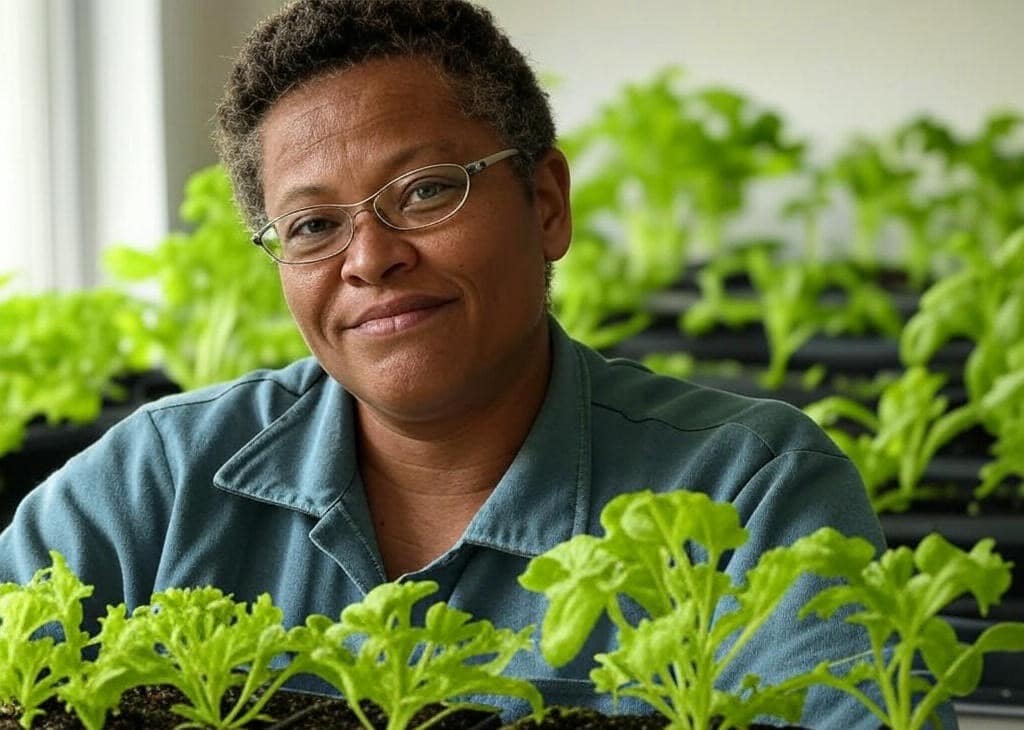Grow Hydroponic Tomatoes without Soil
Table Of Content
Hydroponics is an innovative method that lets you grow tomatoes without the hassle of soil. After experimenting with different configurations, I discovered that hydroponic systems transform tomato cultivation by providing precise nutrient control. This approach typically results in faster growth, higher yields, and a consistent supply of fresh tomatoes all year round—even indoors. Whether you prefer sweet cherry tomatoes or juicy beefsteak varieties, this guide covers everything you need to know about growing hydroponic tomatoes.
Let’s explore how to set up and maintain your very own hydroponic tomato garden.

Why Use Hydroponics to Grow Tomatoes?
Growing tomatoes hydroponically comes with several advantages. Nutrients are delivered directly to the roots, which accelerates growth and supports abundant harvests even in limited spaces. Indoor setups allow you to bypass seasonal weather constraints, ensuring a continuous supply of tomatoes. Additionally, hydroponics is environmentally friendly due to its lower water consumption and reduced pest issues. Overall, this method provides consistent, high-quality produce with less mess and lower resource requirements.
Hydroponic vs. Soil-Grown Tomato Comparison
Both hydroponic tomatoes and soil-grown tomatoes have their advantages. Hydroponic tomatoes benefit from controlled nutrient delivery, resulting in a consistent flavor and higher yield. It’s often two to three times more per square foot than traditional methods. In contrast, soil-grown tomatoes are sometimes noted for a more “earthy” taste and contribute to local soil health.
Additionally, hydroponics uses significantly less water and often requires fewer pesticides. Ultimately, the choice depends on your goals, whether they lean toward efficiency and sustainability or traditional, organic methods.
Top Hydroponic Tomato Varieties
There are several tomato varieties that thrive in a hydroponic environment. For instance, cherry tomatoes like Sweet 100 and Sungold are prized for their sweetness and compact size, making them perfect for snacking or salads. Beefsteak varieties such as Big Boy and Brandywine yield large, juicy fruits ideal for slicing and sandwiches. Plum or Roma tomatoes like Amish Paste and San Marzano, are excellent for making rich sauces.
Each variety offers unique benefits, though many indoor growers favor cherry tomatoes for their rapid growth and low maintenance.
Hydroponic Tomato Growing System Types
There are multiple hydroponic systems suitable for tomato cultivation, each with its own strengths.
- Deep Water Culture (DWC): A beginner-friendly system where plant roots are suspended in an oxygenated, nutrient-rich water solution.
- Nutrient Film Technique (NFT): Uses a thin film of nutrient solution flowing continuously over the roots, ideal for limited spaces.
- Drip Systems: Gradually deliver nutrients and work well in larger setups by allowing controlled watering.
- Aeroponics: Involves suspending roots in the air and misting them with nutrient solutions for rapid growth, though it requires a more advanced setup.
Set Up Your Hydroponic Tomato Garden
Setting up your hydroponic tomato garden is simpler than it might seem. First, decide whether you want an indoor or outdoor system; indoor setups offer complete control over light and temperature, while outdoor systems rely on weather conditions. Many gardeners enjoy building custom systems that fit their available space and budget. Essential equipment includes full-spectrum LED grow lights, a tomato-specific nutrient solution, and support structures like trellises or cages. Monitoring tools such as pH and EC meters are also crucial for maintaining the correct nutrient balance.
Water Management, Requirements, and Nutrients
Water management is crucial for a thriving hydroponic garden. For young plants, a milder nutrient solution is recommended, while a higher concentration—particularly of potassium and phosphorus—is beneficial during the flowering stage. Keeping the pH between 5.5 and 6.5 and maintaining water temperatures between 65°F and 75°F (18°C to 24°C) are essential for optimal nutrient uptake and oxygen flow. Proper drainage and circulation help prevent overwatering and root issues. Regular cleaning and occasional flushing of the system prevent salt buildup and ensure long-term success.
Regular maintenance and early troubleshooting are key to keeping your hydroponic system productive. Daily checks using pH and EC meters help detect any nutrient imbalances before they become serious issues. It’s important to inspect your equipment—such as lights, timers, and pumps—on a routine basis to avoid unexpected failures. Maintaining a stable water temperature with heaters or chillers when needed also supports plant health. A few minutes of daily monitoring can prevent small problems from escalating into major setbacks.
Harvesting and Storage of Hydroponic Tomatoes
Knowing when and how to harvest your tomatoes is essential for preserving their flavor and quality. Hydroponic tomatoes are generally ready for harvest 60 to 85 days after transplanting, indicated by a rich, uniform color, slight softness, and a pleasant aroma. Harvest during the cooler parts of the day to reduce stress on the fruit. Once picked, store your tomatoes in a cool, dry place to maintain freshness, or use any surplus for making salsas and sauces. Proper handling from harvest to storage ensures you enjoy the best flavors from your garden.
Hydroponic Cherry Tomato Growing Indoors Example
For those new to hydroponics, growing cherry tomatoes indoors is an excellent starting point. Follow these steps to get started:
- Select Your System and Space: Choose a manageable system, such as DWC or NFT, and set up a dedicated space indoors.
- Assemble Your Tools: Install full-spectrum LED lights 12 to 18 inches above the plants and set a timer for 14–16 hours of light daily. Use fans to regulate humidity and ensure proper air circulation.
- Prepare Your Nutrient Solution: Mix a tomato-specific nutrient blend, adjusting the pH to between 5.5 and 6.5. Start with a lower concentration for seedlings, increasing it as the plants grow.
- Planting: Either germinate seeds in a small tray or transplant young seedlings into your system once they are strong enough.
- Daily Maintenance: Check nutrient levels, pH, and water levels every day. Gently shake the plants to help with pollination and prune any excess foliage as needed.
Hydroponic Tomatoes Cost and Profitability
While setting up a hydroponic system may require an initial investment in quality equipment like grow lights, pumps, and nutrient solutions, the long-term benefits can be significant. Once established, the recurring expenses are relatively low compared to traditional gardening, and the water savings and increased yield per square foot often offset the startup costs.
Many gardeners have experienced dramatic improvements in production, which can be especially appealing if you plan to sell locally. In the end, the efficiency and productivity of hydroponic systems make them a smart choice for both personal and commercial cultivation.
FAQs
How often should I change or refresh my nutrient solution?
It’s generally recommended to drain and replenish the nutrient solution every one to two weeks to maintain balance and prevent clogging.
Should I use tap water or filtered water in my hydroponic tomato system?
High-quality tap water is usually acceptable; however, if your tap water contains high levels of minerals or chlorine, using filtered or dechlorinated water is advisable.
How can I maintain the proper humidity for indoor tomato cultivation?
Aim for a relative humidity of 50% to 70% by using fans or a dehumidifier to regulate the environment and prevent mold growth.
Is it possible to grow tomatoes hydroponically without chemicals?
Yes, you can use certified organic nutrient solutions and follow organic system practices to cultivate tomatoes without synthetic chemicals.
How can I propagate new tomato plants from cuttings in a hydroponic system?
Simply take a healthy stem cutting, root it in water or a suitable rooting medium, and then transplant it into your hydroponic system once it has established roots.
Table Of Content
